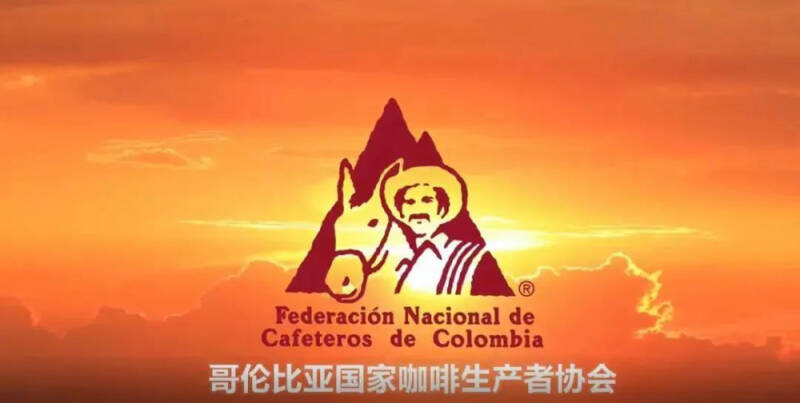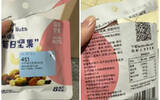Introduction to Colombian Coffee History, Coffee Development, dividing Line Manor, Rosa Coffee Bean
Colombia is a land and sea country located in the northern part of South America. The topography of the country is roughly divided into the western mountain region and the eastern plain. The west is mainly the Andes, and there are many coastal plains, while the east is mainly Orinoco plain and Amazon plain.

According to some records, coffee may have been introduced into Colombia through Jesuit monks in 1723 and slowly spread across the country. But development did not really begin until the end of the 19th century, but in 1899-1903, war broke out in the Colombian country, resulting in a sharp decline in the population of coffee growers and the abandonment of a large number of plantations. When the war ended, in order to save the coffee industry, the government began to integrate the wasteland and divide it into small plots, selling it to farmers at very low prices, allowing them to grow coffee and other crops and start a new life. By 1912, coffee had developed and accounted for 50% of Colombia's total exports.

But coffee produced by small coffee farms does not have much say in the international coffee market. So in 1920, at the suggestion of a farmer, the Colombian Coffee Union was formed to protect the interests of small coffee farms. Since then, the organization has grown, and in 1927 led to the more authoritative and regulated Colombian National Coffee producers Association, or FNC. Since its establishment, FNC has taken a series of measures, including strict quality control, the establishment of the National Coffee Research Center, the creation of Juan Valdez Juan Valdez and his mule Conchita to promote Colombian Coffee, etc., to enhance the global competitiveness and influence of Colombian Coffee. At present, Colombia has become the third largest coffee producer and exporter in the world, but coffee cultivation is still dominated by small farms. There are also many famous manors, such as the dividing Line Manor (Finca El Diviso).
Nestor Lasso and family and friends
The demarcation Line Manor (Finca El Diviso) is located in the most famous producing area in Colombia, Huilan, which is a coffee plantation about 1700 meters above sea level. Founded in 1996 by Jose Uribe Lasso, a 27-year-old family-owned coffee maker, the estate has 14 hectares of acreage and is mainly staffed by family and friends. It is currently run by the founder's son, Nestor Lasso. Each year, May to July is the small yield season, and September to December is the high production season, mainly growing 12 coffee varieties, such as Rose Summer, Pink bourbon, Yellow Bourbon, Castillo, Hijaw and Kaddura.
Australian player Anthony Douglas)
At the 2022 World Coffee Competition (WBC). Anthony Douglas, a contestant from Australia, adopted the coffee beans from the dividing line estate and won the championship in one fell swoop. At this dividing line, the manor and the claw variety of coffee became popular at once.
Of course, Qianjie Coffee also has coffee beans from the demarcation line manor, and there are also rosy summer coffee beans that have acquired the same kind of coffee beans from the champion. The demarcation line of Qianjie Coffee Xizhao Coffee beans is treated by double anaerobic sun treatment. After being boiled with V60, 1 and 15, there will be a sense of fermentation in the entrance, with grapes, passion fruit, preserved apricot fruit, citrus flavor and mellow taste. On the other hand, the dividing line of Qianjie Coffee Rose Xia is washed. After brewing with V60 jasmine and citrus flavor, the taste is smooth like black tea.
Important Notice :
前街咖啡 FrontStreet Coffee has moved to new addredd:
FrontStreet Coffee Address: 315,Donghua East Road,GuangZhou
Tel:020 38364473
- Prev

Which temperature is the best to drink the hot American style?
First it was cold and windy, and then the temperature began to drop abruptly. Under such a dual effect, everyone in Qianjie has been reduced to a "wide freeze" today. Without a cup of warm coffee in hand, it won't warm up at 01:30, so we can only have another cup. In winter, the hot American style, which usually has a very low sense of existence, has also begun recently.
- Next

Customer feedback to buy expired nuts! Lucky: fired from the whole store
▲ click to follow | Daily boutique coffee culture magazine coffee shop tea lovers are used to serving some refreshments, while coffee lovers are paired with small snacks such as desserts, biscuits or nuts, because consumers have this habit, chain coffee brands will also sell some dessert snacks when selling coffee
Related
- Which is better, Guixia or Huakui coffee? Are Huakui and Guixia the same coffee variety? What is the difference between Huaquai and Geisha?
- Adjust the market layout! Starbucks closes 400 city stores in New York and other places!
- Ice cream scoops will return to the bar?! Ruixing employee: Want to make Xueting Coffee?
- Why is the espresso extraction ratio 1:2? Espresso extraction solution Water volume water temperature pressure powder amount Share!
- How about hand-brewed coffee with rose summer coffee beans in Kafa Forest? What coffee producing area does the Kafa Forest in Ethiopia belong to?
- Brazilian coffee yellow bourbon brewed flavor characteristics and origin share! What grade is red bourbon coffee?
- How to judge the roasting degree/concentration/filtration method of coffee beans from the color of coffee soup? What is the difference between dark and light roast coffee?
- Why are the coffee in some coffee shops not enough after being frozen? What should I make up for my American latte cappuccino coffee after being frozen?
- How much water does it take to steam coffee by hand? Why is the coffee brewing and steaming time 30 seconds? What is the purpose of steaming coffee?
- The suspected drink contains too much caffeine! Overlord Tea Lady responds urgently!

